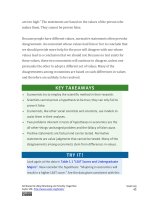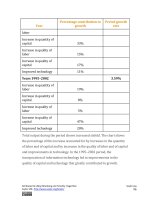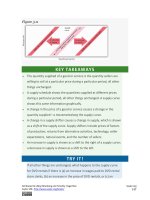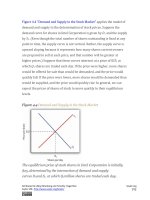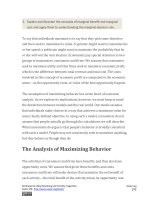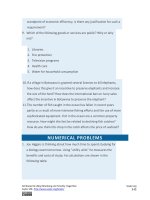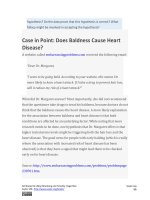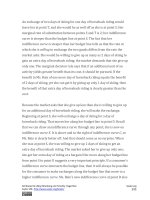Authors libby rittenberg 692
Bạn đang xem bản rút gọn của tài liệu. Xem và tải ngay bản đầy đủ của tài liệu tại đây (588.67 KB, 1 trang )
To purchase the tractor, Ms. Stein pays $95,000. She will receive additional
revenues of $50,000 per year from increased planting and more efficient
harvesting, less the operating cost per year of $30,000, plus the $22,000
she expects to get by selling the tractor at the end of five years. The net
present value of the tractor, NPV0 is thus given by:
NPV0=−$95,000+$20,000+$20,000+$20,000+$20,000+$42,000=$2,690
1.07
1.072
1.073
1.074
1.075
Given the cost of the tractor, the net returns Ms. Stein projects, and an
interest rate of 7%, Ms. Stein will increase her profits by purchasing the
tractor. The tractor will yield a return whose present value is $2,690
greater than the return that could be obtained by the alternative of putting
the $95,000 in a bond account yielding 7%.
Ms. Stein’s acquisition of the tractor is called investment. Economists
define investment as an addition to capital stock. Any acquisition of new
capital goods therefore qualifies as investment.
The Demand Curve for Capital
Our analysis of Carol Stein’s decision regarding the purchase of a new
tractor suggests the forces at work in determining the economy’s demand
for capital. In deciding to purchase the tractor, Ms. Stein considered the
price she would have to pay to obtain the tractor, the costs of operating it,
the marginal revenue product she would receive by owning it, and the
price she could get by selling the tractor when she expects to be done with
it. Notice that with the exception of the purchase price of the
tractor, all those figures were projections. Her decision to purchase the
Attributed to Libby Rittenberg and Timothy Tregarthen
Saylor URL: />
Saylor.org
692
